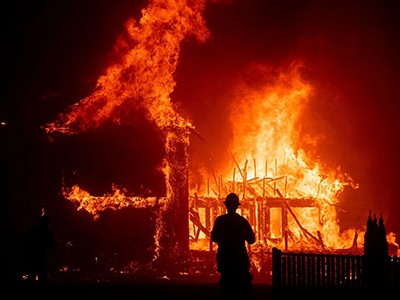Wildfires are becoming more frequent and intense as the world warms — reigniting discussions on how to better manage fire risks. And the nature of wildfires is also changing. To avoid the worst damage, the development and behaviour of the most extreme wildfires need to be better understood.
The idea that wildfires can be managed simply by detecting — using satellites and drones, for example — and suppressing them early has become widespread. That might seem reasonable at first glance, but history tells us otherwise. It could even make things worse in the long run.
You’re not imagining it: extreme wildfires are now more common
We have been here before. In 1910, after a series of catastrophic wildfires in the northwestern United States, fire managers adopted a policy of total suppression: preventing ignitions as much as possible. The aim was to extinguish any blaze by 10 a.m. the next day. The policy was implemented using emerging technologies of the time: aircraft and chemical retardants. ‘Smokejumpers’ were trained to parachute into remote areas to quickly smother flames.
The exclusion of fires in various countries for decades protected homes and businesses to some extent — but it drove key changes in ecosystems. In the western United States, for example, Ponderosa pine (Pinus ponderosa) forests that had been shaped by millennia of frequent low-intensity fires were disrupted. Accumulation of dense thickets of young trees and shrubs increased the frequency of high-intensity fires that propagated through the crowns of trees and shrubs, which these forests were not adapted to withstand. Over time, such intense burning caused loss of biodiversity and altered the structure and composition of the forests in ways that increase the risk of large fires — the very thing the policy was intended to prevent.
Fire exclusion has also led to a loss of Indigenous culture and knowledge about managing landscapes with fire. In Australia, for example, Indigenous burning — the practice by Indigenous communities of stewarding ecosystems with controlled, low-intensity fires — was halted by colonizers in the late eighteenth century, leading to the emergence of a more flammable landscape dominated by eucalypt forests.
The causes of wildfires are clear. How they burn through communities is not
Indeed, the emergence of megafires — those that burn more than 10,000 hectares — in the late twentieth century has been attributed to fire-exclusion policies. The accumulation of fuels combined with a warming climate and urban expansion favours fires that consume vast tracts of land and demand extensive and costly suppression resources.
The end of the twentieth century also saw a rise in the prevalence of extreme wildfires. Whereas megafires are defined by their size, extreme wildfires are characterized by their behaviour and intensity. They burn hotter than typical wildfires do and develop and propagate differently. For example, they can affect urban areas predominantly through showers of embers, burning leaves or twigs, carried by winds that have been strengthened by the fire’s influence on the atmosphere.




